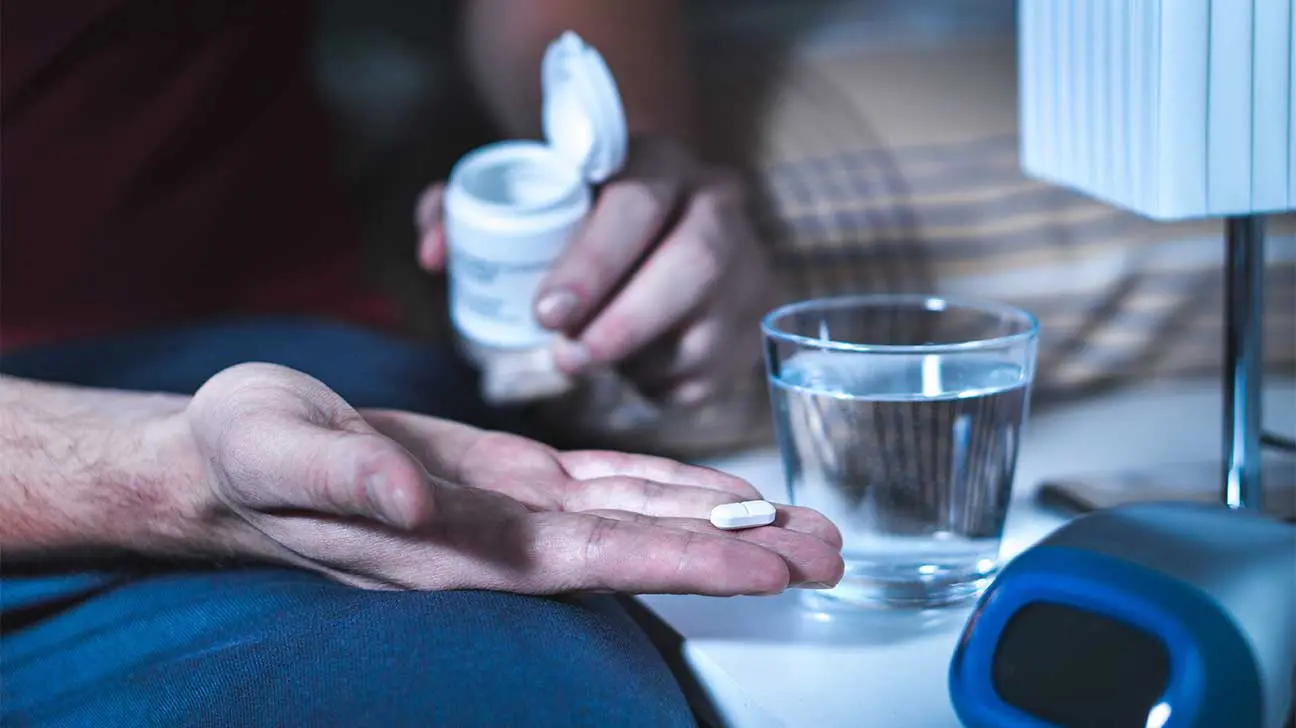
Xanax is the brand name for the prescription medication alprazolam. Xanax is a benzodiazepine, or “benzo” medication that is used mainly to treat panic disorders and anxiety disorders.
Unfortunately, Xanax can also be abused by people who are hoping to feel a euphoric “high” from taking the drug.
Xanax drug abuse and drug addiction is serious and can lead to a number of health concerns, including overdose.
Use the information below to learn more about Xanax, the effects of addiction to Xanax, and where to seek help for benzodiazepine addiction treatment.
Why Is Xanax A Controlled Substance?
Xanax has been listed by the U.S. Food and Drug Administration and the U.S. Drug Enforcement Administration as a controlled substance, meaning it is highly regulated.
Xanax, like other benzos, is a Schedule IV controlled substance because it has a relatively high potential for abuse and can lead to physical dependence.
Learn more about why Xanax is a controlled substance.
How Xanax Works In The Body
Xanax is a central nervous system depressant, meaning it has a calming effect on the body and brain.
The way Xanax works is by enhancing the effect of a neurotransmitter called gamma-aminobutyric acid (GABA).
GABA is a chemical that our brain naturally produces. It calms down the central nervous system by blocking certain brain activity that might be related to anxiety.
By enhancing GABA’s effects, Xanax leads to feelings of relaxation, sedation, and calmness.
Why Do People Abuse Xanax?
Abusing a prescription drug like Xanax means taking the drug in any way other than under the advice of medical professionals.
People often abuse Xanax by taking large doses of the drug and/or combining it with other substances like alcohol.
Abusing Xanax may lead to feelings of well-being or even a euphoric “high”. Xanax abuse can lead to physical dependence and ultimately to addiction.
Methods Of Abusing Xanax
Abuse of Xanax means taking it in any way other than as prescribed.
This includes the following drug abuse methods:
- Xanax insufflation: Snorting Xanax is common among people who abuse the drug. Snorting Xanax gets the drug into the bloodstream faster than ingesting it.
- ingesting high doses of Xanax: Ingesting Xanax at higher doses can lead to euphoric effects.
- plugging Xanax: Plugging Xanax involves rectal administration of the drug. This method of Xanax use can lead to intense effects and make overdose more likely.
Effects Of Xanax Abuse
Xanax abuse has several physical and mental health effects, including some that are dangerous.
Weight Gain
Abusing Xanax over a long period of time can cause either weight gain or weight loss, due to the way addiction affects a person’s appetite and self-care habits and other factors.
Learn more about Xanax-induced weight gain.
Effects On The Eyes
Xanax abuse is linked to many effects on the eyes, including blurred vision, watery eyes, and even yellowing eyes that are the result of jaundice.
Jaundice is caused by liver injury, which can happen from abusing Xanax.
The “Xanax Hangover”
Even a single instance of Xanax abuse can lead to a “Xanax hangover”, which includes mild withdrawal-like symptoms that occur as the drug wears off.
Examples of Xanax hangover symptoms include headache, fatigue, difficulty sleeping, and an upset stomach.
Other Effects
Xanax abuse can affect the body and brain in many different ways.
Some other side effects of Xanax misuse include:
- memory problems
- increased anxiety
- trouble concentrating
- depression
- mood swings
- drowsiness
- suicidal thoughts
- respiratory depression
Signs Of A Xanax Addiction
If you are concerned that a family member or another loved one is abusing Xanax, it helps to know what signs to look out for.
Signs of Xanax addiction may include:
- slurred speech
- drowsiness
- asking family and friends for Xanax pills
- spending too much time and money trying to get Xanax
- engaging in risky behavior like driving or having sex after Xanax abuse
What Is Xanax Called On The Street?
If someone close to you is abusing Xanax, they might refer to the drug using a number of different street names.
Street names for Xanax include:
- bars
- planks
- yellow school bus
- xannies
- z-bars
- ladders
- hulk
- footballs
- handlebars
Read more about street names for Xanax.
How Much Does Street Xanax Cost?
Xanax generally costs between $3 to $5 per pill on the street. Xanax pills that have a higher dosage usually cost more.
Xanax bought on the street might contain adulterants like the deadly opioid fentanyl, which increase your risk of overdose.
Learn more about the street cost of Xanax.
Xanax And Polysubstance Abuse
Xanax is often abused alongside other substances. Xanax interacts dangerously with several drugs, including opiates and alcohol.
Dangerous Xanax drug interactions include:
- Xanax and alcohol: Xanax and alcohol is a common mixture that can lead to increased risk of addiction, blackouts, fatigue, aggression, and cognitive impairment.
- Xanax and heroin: Xanax and heroin abuse can lead to effects like an increased risk of overdose and intense withdrawal symptoms.
- Xanax and meth: Abusing Xanax and meth together can increase risk of overdose and lead to effects like hallucinations and psychosis.
- Xanax and cocaine: Mixing Xanax and cocaine can damage the cardiovascular system and other organs.
Mixing Xanax with other prescription drugs may be just as risky, particularly when mixing it with other depressant medications.
Dangerous Xanax medication combinations include:
- Xanax and Adderall: This mixture can lead to seizures, heart failure, or overdose.
- Xanax and Vyvanse: This mixture can damage the brain, heart, and lungs and lead to seizures.
- Xanax and Ativan: Both of these are benzo drugs, and abusing both can lead to increased tolerance and risk of overdose.
- Xanax and Klonopin: Xanax and Klonopin are both benzos, and abusing both drugs increases the risk of fatal overdose as well as other symptoms.
- Xanax and fentanyl: Abusing both Xanax and fentanyl increases chances of overdose and death.
- Xanax and codeine: This drug combination can lead to trouble breathing, overdose, and more.
- Xanax and methadone: This mixture leads to an increased risk of addiction and overdose.
- Xanax and Suboxone: This mixture leads to an increased risk of trouble breathing and overdose.
Even mixing Xanax with certain non-addictive substances can pose risks, such as taking Xanax and grapefruit juice together.
Dangers Of Xanax Abuse
Abusing Xanax over a long period of time has many dangers, in addition to the risk of developing a dependence or drug addiction.
Developing A Tolerance
When someone abuses Xanax repeatedly, they will start to need larger doses of the drug to feel the same effects.
An increased Xanax tolerance is dangerous because it increases the likelihood of someone taking a dose large enough to cause an overdose.
Learn more about tolerance to Xanax.
Xanax Withdrawal
Xanax withdrawal happens when someone who has become dependent on the drug suddenly stops taking it.
Withdrawal symptoms from Xanax abuse can include seizures and psychosis.
Taking A Lethal Dose Of Xanax
People abusing Xanax may take large doses of the drug to try to get high. This increases the chances of taking a fatal dose of the drug. Xanax overdose can lead to death.
Find out more about lethal doses of Xanax.
Signs And Symptoms Of Xanax Overdose
Knowing the signs of a Xanax overdose might help you save someone’s life.
Xanax overdose signs and symptoms include:
- fast, weak pulse
- slurred speech
- slowed reflexes
- clammy skin
- seizures
- coma
How Long Xanax Stays In The System
Xanax stays in the system for different amounts of time depending on a number of factors.
Factors that influence how long the drug will stay in the body include age, weight, overall health, diet, hydration, whether any co-occurring disorders are present, and more.
In general, people that are young and healthy process drugs like Xanax faster than people that are older and more unhealthy.
This benzodiazepine may be detected through the following methods:
- Xanax blood tests: average of two days
- Xanax urine tests: two to eight days
- Xanax saliva tests: around three days
- Xanax hair tests: up to three months
Find out more about Xanax detection.
Does Xanax Cause Withdrawal Symptoms?
When someone is dependent on Xanax and stops taking it, they are likely to have withdrawal symptoms.
Xanax withdrawal symptoms can range from mild to severe and even life-threatening.
Symptoms of Xanax withdrawal may include:
- anxiety
- tremors
- hyperventilation
- panic attacks
- loss of appetite
- sweating
- discomfort
- psychosis
- seizures
Xanax Detoxification
The first step in treating Xanax addiction is often visiting an inpatient detox center.
Inpatient detox provides clients with medical monitoring and around-the-clock care to keep them as comfortable and stable as possible during withdrawal.
Treatment Options For Xanax Addiction
Xanax addiction is a serious drug use disorder that can lead to fatal overdose and a variety of health issues.
Treating Xanax addiction involves making a detailed treatment plan that includes elements like cognitive behavioral therapy, group counseling, and psychiatry interventions.
Xanax addiction treatment often starts with detox before moving to an inpatient treatment center and finally to outpatient care.
Find Substance Use Disorder Treatment
If you or someone you love is facing substance abuse, now is the time to act. Contact us today to learn where you can go to get help for a Xanax addiction.
Addiction Resource aims to provide only the most current, accurate information in regards to addiction and addiction treatment, which means we only reference the most credible sources available.
These include peer-reviewed journals, government entities and academic institutions, and leaders in addiction healthcare and advocacy. Learn more about how we safeguard our content by viewing our editorial policy.
- National Library of Medicine (PubMed) –– The effects of benzodiazepines on cognition
https://pubmed.ncbi.nlm.nih.gov/15762814/ - National Library of Medicine (PubMed) –– Benzodiazepine use, misuse, and abuse: A review
https://www.ncbi.nlm.nih.gov/pmc/articles/PMC6007645/ - United States Drug Enforcement Administration (DEA) –– Benzodiazepines FactSheet
https://www.dea.gov/sites/default/files/2020-06/Benzodiazepenes-2020_1.pdf


